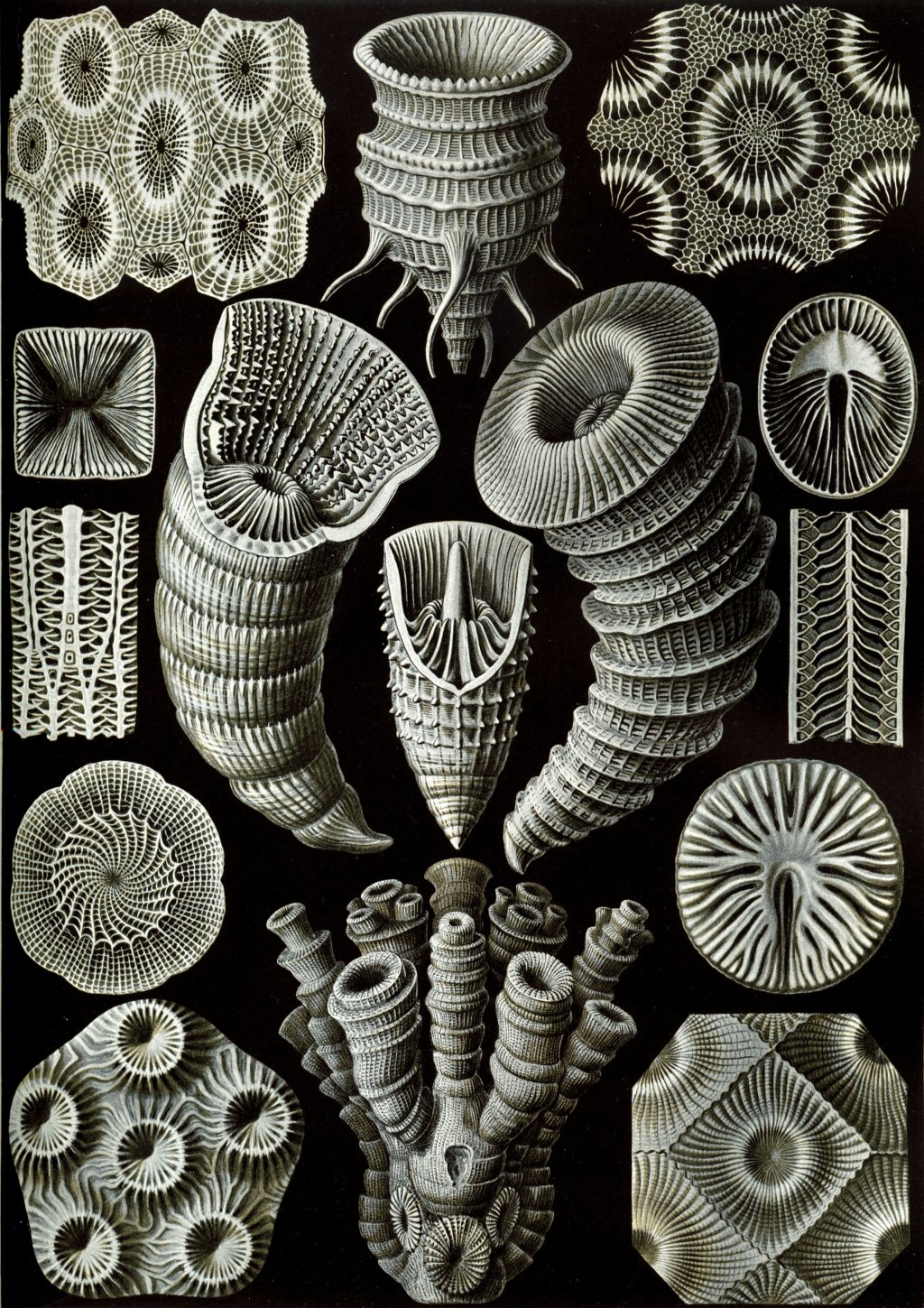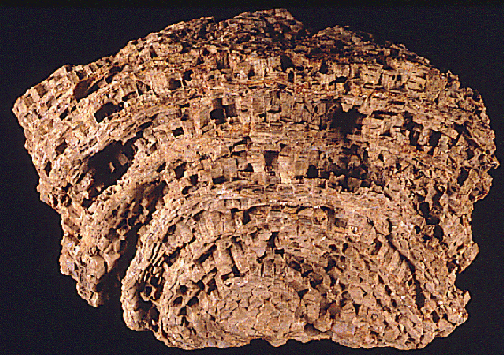[Recent Entries][Archive][Friends][User Info]
September 6th, 2011
| September 6th, 2011 | |
|---|---|
| 07:42 pm [industrialterro] [Link] |
Ругозы Ругозы (Rugosa), четырёхлучевые кораллы (Tetracorallia), подкласс вымерших кишечнополостных класса коралловых полипов, существовавших от среднего ордовика до конца перми. Одиночные или колониальные полипы с наружным известковым скелетом. Одиночные ругозы имели роговидную, цилиндрическую или призматическую форму; у некоторых имелась крышечка, закрывавшая устье при опасности. Обитали в мелководных зонах морей, прирастая к подводным предметам или свободно лежали на дне; в отличие от современных шестилучевых коралловых полипов, ругозы не образовывали рифовых построек. Как правило, ругозы обитали в шельфовой зоне, обладали повышенными требованиями к температуре и прозрачности воды. Имеют большое значение для стратиграфии палеозоя и выяснения общей эволюции коралловых полипов.
Tags: Вымершие беспозвоночные, Силур |
| Time | Event |
| 07:54 pm [industrialterro] [Link] |
Табуляты Подкласс Табуляты - Tabulata - объединяли вымерших коралловых полипов. Жили от позднего кембрия до перми. Колонии массивные, кустистые или стелющиеся, из небольших (0,5-4 мм) трубчатых кораллитов, округлых или многоугольных в сечении. Скелет известковый. Like rugose corals, they lived entirely during the Paleozoic, being found from the Ordovician to the Permian. With Stromatoporoidea and rugose corals, the tabulate corals are characteristic of the shallow waters of the Silurian and Devonian. Sea levels rose in the Devonian, and tabulate corals became much less common. They finally became extinct in the Permian-Triassic extinction event.
Ископаемые останки (1, 2, 3, 4):
Tags: Вымершие беспозвоночные, Силур |
| Time | Event |
| 08:34 pm [industrialterro] [Link] |
Drepanopterus Drepanopterus is an extinct genus of eurypterid. There are currently two species assigned to the genus. The genus has in the past been assigned its own family, with nine species associated with the genus Drepanopterus, however five of these have since been proven to be synonyms of pre-existing species, assigned to their own genera, or found to be based on insubstantial fossil data (the holotype of one proved to be a lithic clast). Drepanopterus pentlandicus was first described from the Silurian strata of the Pentland Hills in Scotland. The only other fully described valid species is Drepanopterus abonensis, from the Upper Devonian of Portishead, Somerset. The exact relationship of Drepanopterus to other Eurypterids has long been unclear, however it is now apparent that it is a primitive hibbertopteroid, and an early relative of the Carboniferous Hibbertopterus. Drepanopterus is distinguished by its "fairly large" size, compound eyes with parallel axes on a subrectangular to subovate prosoma (head). All of its legs are walking legs; the first three pairs are short and powerful, with spines; the last two pairs are moderately long, ending in strongly curved terminal claw. The last leg reaches as far as the penultimate abdominal segment. The telson ranges from styliform to clavate. Drepanopterus date from the Silurian to the Upper Devonian periods.
Tags: Вымершие членистоногие, Силур |
| Time | Event |
| 09:13 pm [industrialterro] [Link] |
Hughmilleria Hughmilleria is a genus of Silurian eurypterid. The genus name commemorates the Scottish geologist Hugh Miller. Fossils of Hughmilleria have been found in Silurian deposits from the Llandovery and Ludlow epochs. Together with its close relatives, Hughmilleria dominated the communities in brackish and fresh water, while Pterygotus and Eurypterus dominated marine environments. The family Hughmilleriidae, which lived from the Ordovician to Permian periods, were small to large forms with outer surfaces that were either smooth or that had transverse integuemental folds or semilunar to pointed scales. The telson (tail) was lanceolate or somewhat expanded. Hughmilleriidae also had chelicerae (claws in front of the mouth) that were small to medium-sized, without teeth. Their walking legs were stout, with spines, and their swimming paddles were narrow. The genital appendages of males were narrow, without lateral points. Hughmilleria is distinguishable from other Hughmilleriidae by the postlateral prolongation of the first postabdominal segment. The telson is lanceolate in form. The chelicerae are medium-sized. The prosoma (head) is ovate, with compound eyes located near the edge of the front corners.
Tags: Вымершие членистоногие, Силур |
| Time | Event |
| 09:28 pm [industrialterro] [Link] |
Carcinosoma Carcinosoma is a genus of an extinct arthropod. Up to 30 cm long, these eurypterids were found in New York and in other states of the United States. It is from the Late Silurian. Carcinosoma were characterized by small to large exoskeletons with scattered minute tubercules or raised tongue-shaped scales. The prosoma (head) was subtriangular, with small compound eyes at the front. The chelicerae (claws in front of the mouth) were small. The walking legs were covered with long spines, and the second pair of walking legs was the longest. The preabdomen, the front portion of the body, was broad and ovate, while the postabdomen was cylindrical and narrow. The telson was a curved spine.
Tags: Вымершие членистоногие, Силур |
| Previous Day | 2011/09/06 [Archive] |
Next Day |





















